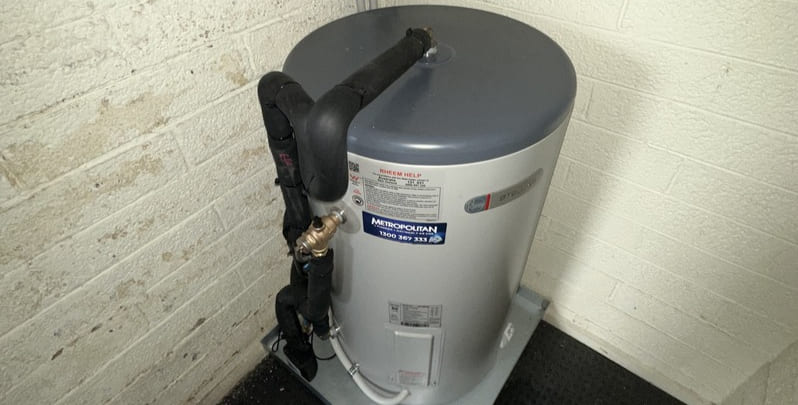Low water pressure is a common plumbing issue that most homeowners face at some point in their lives. When your water pressure drops significantly, it can turn simple tasks into frustrating chores. Filling the kitchen sink takes longer than usual, and the idea of a relaxing, long shower becomes a distant memory. Low hot water pressure, in particular, can be especially inconvenient.
There are many possible reasons for low water pressure in your home. From clogged pipes to leaking systems or a faulty pressure regulator, understanding the root cause is key to resolving the issue. In this guide, we’ll explore the most common causes of low water pressure and provide practical solutions to help restore normal flow.
### Common Causes of Low Water Pressure
Low water pressure from your hot water supply can make daily routines more difficult. However, knowing what might be causing the problem can help you take the right steps to fix it. Here are some of the most typical causes:
- **Faulty fixtures**: Clogged taps, showerheads, or outdated faucets can restrict water flow.
- **Leaky pipes**: Hidden leaks in your main water line can lead to a significant drop in pressure.
- **Corroded or clogged pipes**: Over time, mineral buildup and corrosion can block the passage of water.
- **Faulty pressure regulator**: A damaged pressure regulator can result in inconsistent or low water pressure.
- **High water demand**: Using multiple water sources at once can temporarily lower available pressure.
By identifying and addressing these issues, you can improve your water flow and restore efficiency to your home’s plumbing system.

### Check the Water Meter and Main Water Line
Before jumping to conclusions, start by checking your water meter and main water line. Ensure that the valve is fully open—partially closed valves can reduce water flow. It's also worth contacting your local water supplier to see if there are any known issues affecting your area. Additionally, inspect your main water line for signs of damage or leaks, as these can greatly impact pressure inside your home.
If everything looks good but the issue remains, it may be time to call a licensed plumber.
### Faulty Fixtures Can Be the Culprit
Before assuming a major plumbing overhaul is needed, check your fixtures first. A single clogged showerhead or worn-out faucet can be the source of the problem. Common culprits include:
- **Taps** – Blockages or wear can slow down water flow.
- **Showerheads** – Mineral deposits often clog small holes, reducing pressure.
- **Toilets** – A faulty fill valve can affect how water flows during refilling.
- **Water softeners** – These can cause pressure issues if they become clogged.
- **Washing machine connections** – Leaks or blockages in hoses can reduce water flow.
- **Dishwashers** – A clogged inlet valve can limit water intake.
Cleaning or replacing old fixtures may be all you need to restore proper pressure.
### Issues with Your Home’s Pipes
If your fixtures and meter are fine, the problem could lie within your pipes. Here are some potential pipe-related issues:
#### Corroded Pipes
Older homes with galvanized steel pipes are prone to corrosion, which can lead to blockages and reduced pressure. If the damage is extensive, replacing the entire piping system may be necessary.
#### Pipe Build-Up
Mineral deposits and sediment can accumulate over time, creating blockages. A professional plumber can flush your system, or you can install an inline filter to prevent future buildup.
#### Incorrect Pipe Size
Improperly sized pipes can also cause pressure problems. If you recently had plumbing work done, ensure that the correct size was used. DIY plumbing is not recommended due to the risk of mistakes and potential damage.
#### Leaky Pipes
Hidden leaks can cause a noticeable drop in pressure. If you don’t see visible leaks, watch for increased water bills or signs of water damage. Professional detection is often required for concealed leaks.
### High Demand vs. System Capacity
Sometimes, low water pressure is simply a sign that your system can’t keep up with demand. If you’re using multiple water sources at once, like running the dishwasher and taking a shower, pressure can drop. Coordinating usage or upgrading your hot water system may be necessary.

### Broken Pressure Regulator
The pressure regulator controls the water pressure entering your home. A faulty one can cause both low and high pressure issues. If you suspect a problem, a qualified plumber should replace the regulator to restore safe and consistent pressure.
### How to Test Your Water Pressure
Checking your water pressure is simple and can help you determine if action is needed:
- **Use a pressure gauge**: Attach it to an outdoor spigot and turn on the water. Normal pressure is between 40–60 psi.
- **Test multiple taps**: If only one tap has low pressure, the issue may be isolated.
- **Check hot and cold water**: Low hot water pressure could indicate a problem with your hot water system.
### Issues with the Water Supply
Don’t forget to check with your local council or water provider. They may be experiencing issues that affect your supply. They might also inform you of nearby construction or maintenance that could temporarily impact your pressure.
### Let Metropolitan Plumbing Help
If you're struggling with low water pressure, Metropolitan Plumbing offers expert services to diagnose and resolve the issue. Our technicians can perform pressure tests, identify blockages, and recommend repairs. We’re available 24/7 to assist you with all your plumbing needs.
*Note: This information is for general advice only. Regulations vary by location, so always consult a professional before making any plumbing changes.*
Dental Lab Supply Store,Denture Lab Supplies,Dental Laboratory Supplies
Ningbo Hinix Hardware Industry & Trade Co., Ltd , https://www.hinixpack.com
